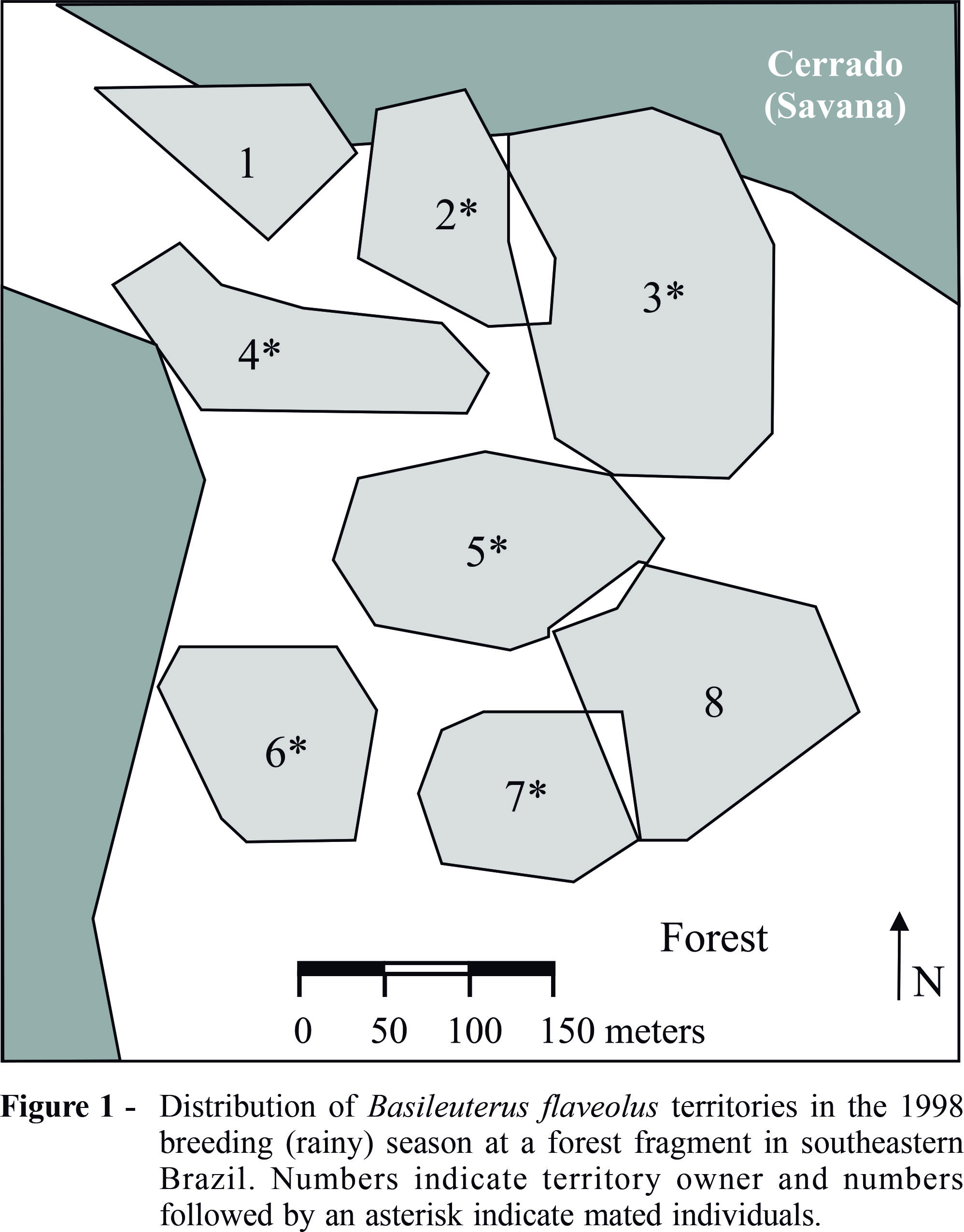Tamanho do território do Canário-do-mato, Basileuterus flaveolus (Passeriformes, Emberizidae), em um fragmento florestal no Sudeste do Brasil
DOI:
https://doi.org/10.35699/2675-5327.2005.22022Palavras-chave:
Basileuterus flaveolus, birds, pairing success, territory sizeResumo
Factors determining territory size of Neotropical birds are still poorly studied. However, it has been pointed out that it varies according to resource availability. Here, we estimated territory size of the flavescent warbler (Basileuterus flaveolus) and evaluated its correlation with arthropod biomass. We conducted this study at a 19.3 ha grid inside a 50 ha forest fragment, in southeastern Brazil. Territory sizes were small, and did not vary significantly among seasons. Eight territories were recorded during the breeding season of 1998, with a mean size of 2.0 + 0.6 ha. In six of the eight territories, males were paired. During the non-breeding season of 1999, the mean territory size was 2.2 + 0.9 ha and in the breeding season of 1999, it was of 1.9 + 0.8 ha. Territory sizes were not correlated with distance to the forest edge, but males defending territories closer to the forest edge were more successful in pairing than those in the forest interior. There was no significant relationship between territory size and arthropod biomass.

Downloads
Publicado
Edição
Seção
Licença

Este trabalho está licenciado sob uma licença Creative Commons Attribution-NonCommercial 4.0 International License.
